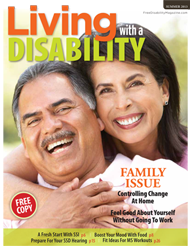Heart failure, also known as Congestive Heart Failure (CHF) is typically defined as a condition in which the heart is unable to pump enough blood to the other organs of the body. Consequently, the blood is not able to move easily through the circulatory system, which further increases the pressure in the blood vessels and pushes fluid from the blood vessels into body tissues.
CHF and Social Security Disability Benefits
The Social Security Administration (SSA) funds the Social Security Disability program, a federal program that offers monetary assistance to the individuals who meet the criteria of being disabled. These benefits are provided under two main programs, including:
i) Social Security Disability Insurance (SSDI), which is available to those who have paid in to the Social Security trust fund through the Federal Insurance Contributions Act (FICA) taxes (payroll tax).
ii) Supplemental Security Income (SSI) is offered to those individuals who meet low-income guidelines, irrespective of their previous employment records.
Getting Disability Benefits
The SSA lists specific criteria that one must meet or equal to be declared ‘disabled’ for individuals suffering from heart failure or CHF. The listing is detailed in the SSA’s listings of medical impairments. The two key forms of the disorder discussed in the listing include the systolic and diastolic versions of CHF.
i) Systolic Dysfunction
This disorder relates to the heart’s inability to pump blood during the contraction phase, called systole. When the objective tests are at the levels in the listing, the patient has a good chance at being awarded disability benefits. To meet this criteria an echocardiography (ECHO) or the heart ultrasound report of the patient should show either:
a) The left ventricle (largest left-sided chamber of the heart that pumps blood out to the body) end diastolic dimension should be greater than 6.0 cm, or
b) Ejection fraction (EF) should be at 30 percent or less.
ii) Diastolic Dysfunction
This form of CHF reduces the heart’s ability to relax and fill with blood during the relaxation phase. Also reflected on the ECHO report, these criteria will include the following:
a) The left ventricular posterior wall along with septal thickness should total up to 2.5 cm or more, accompanied by an enlarged left atrium, which should be greater than or equal to 4.5 cm.
b) The normal or elevated ejection fraction should be observed during a period of stability.
Further Disability Analysis
For the purpose of being awarded disability benefits by the SSA, the above conditions might not be enough in themselves for you to be awarded benefits. Not everyone will meet or equal a listing of an impairment in the medical listings. Beyond the listings alone, the following factors are also considered in determining a claimant’s eligibility for the Social Security disability benefits:
- Verifications of physical symptoms of CHF such as distended neck veins (jugular venous distention), abnormal heart sounds (S3 gallop), enlarged liver (hepatomegaly), fluid accumulation in the legs (peripheral edema) and the like.
- Examination of medical records such as x-ray reports, echocardiography, radio nuclide studies etc.
- Other physical symptoms such as shortness of breath, exertion, chest pain etc.
- Analysis of past relevant work history, and alternate jobs available in the national economy, in an effort to see if the claimant can obtain and then sustain full time employment.
Previous post: What Does Social Security Mean by “Other Work”?










